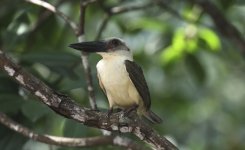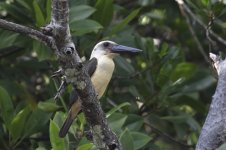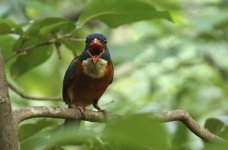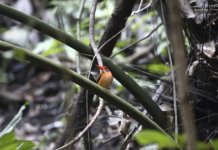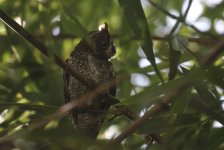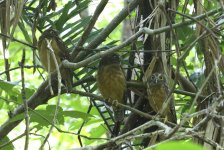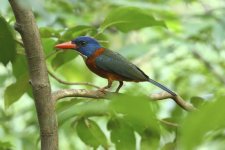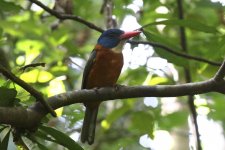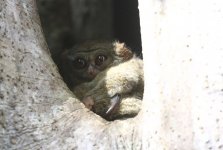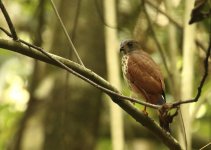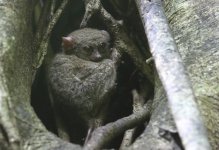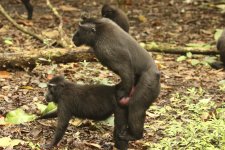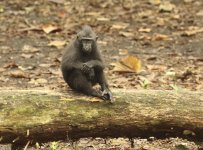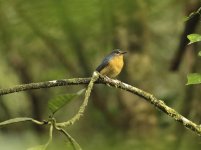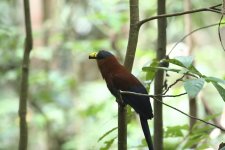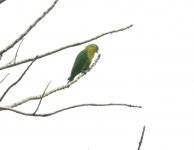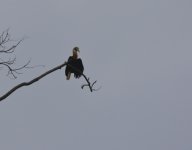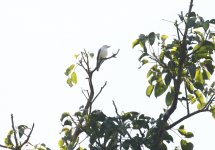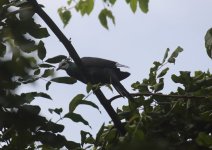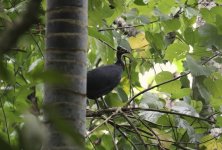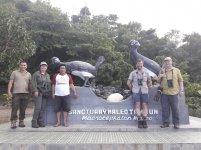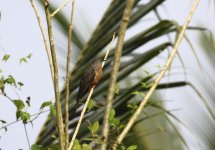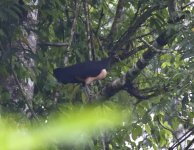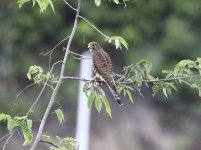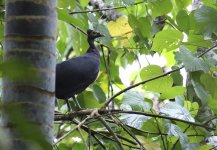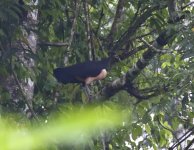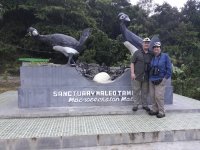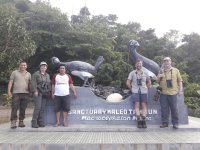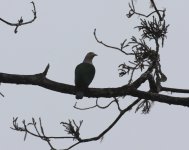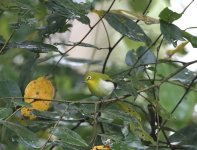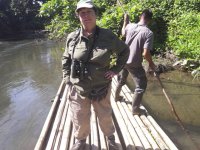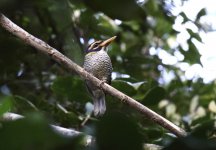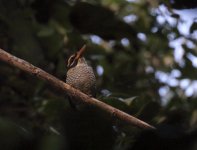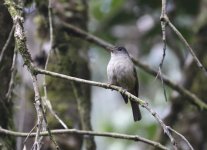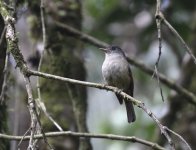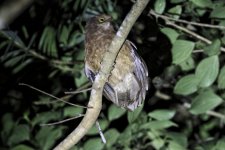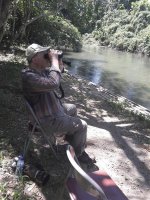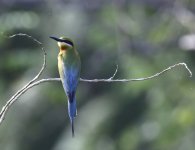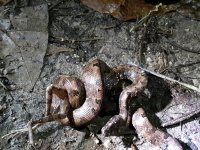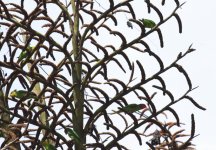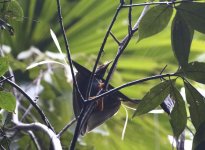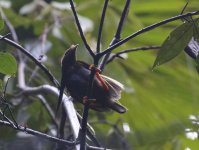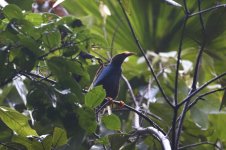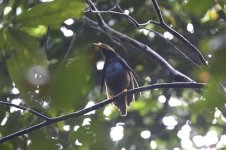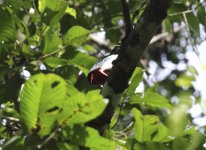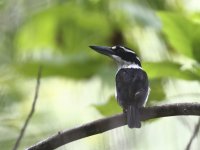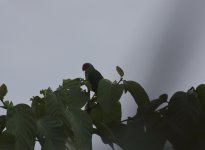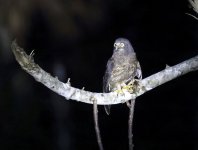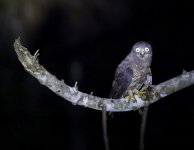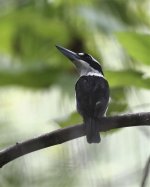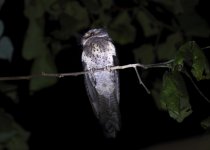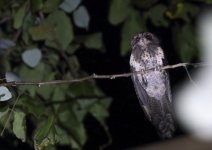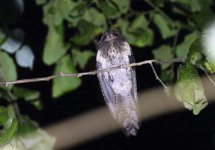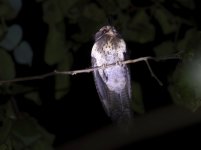We could not fit in with any organised tours to Sulawesi & Halmahera and because of annual leave restriction and we couldn’t do the full standard Birdtour Asia itinerary, our preferred option, even as a private tour so we decided not to go for the Scrubfowl on Halmahera (avoiding long 8 hour drive for a single bird) and also dropped Lompobattang to fit in with our dates. The cost for the private tour was competitively priced considering it was a custom tour with a dedicated guide – Carlos Bocos who is Spanish but lives in Manado on Sulawesi and was an expert on Indonesian birds.
Overview
Flew with emirates from Manchester to Jakarta via Dubai.
Arrived in Jakarta on 5th November Stayed in Airport Hotel.
Early flight to Manado on Sulawesi on 6th November and transfer to the nearby Tangkoko-Dua Saudara National Park staying in Tangkoko Lodge.
November 7th and 8th in wonderful park of Tangkoko with its forest rising from coastal to submontane.
Evening of 8th November travel to Tomohon for an overnight stay at Onong’s Resort.
November 9th we visit the nearby remnant forest patches of Gunung Mahawu, then PM we make the long drive to Kotamobagu, our base for the next four nights. Stayed in Kotamobagu at the Patra Jasa Hotel as local lodge is full, although we do have use of a room and lunch there on a few days.
November 10th,11th and 12th explore several areas of the Dumoga-Bone National Park.
November 13th early start to go north of Kotamobagu to another national park, Gunung Ambang. Then night in Manado.
November 14th flight directly to Halmahera and from there transfer to the Weda Bay Resort.
14th – 18th birding in Weda Bay and Nickle Mine area for high elevation species.
November 18th speed boat across to Ternate and flight to Makassar
November 19th visit the limestone karst forest at Karaenta, then PM flight to Palu – drive to Lore Lindu
November 20th 21st and 22nd from Sendy’s Guest House daily forays to the higher reaches of the park.
November 23th morning at Lore Lindu the drive to Palu via Biramaru night in Palu.
November 24th Flight Palu to Jakarta on Java.
November 25th and 26th in Jakarta
November 27th fly home to Manchester
Overview
Flew with emirates from Manchester to Jakarta via Dubai.
Arrived in Jakarta on 5th November Stayed in Airport Hotel.
Early flight to Manado on Sulawesi on 6th November and transfer to the nearby Tangkoko-Dua Saudara National Park staying in Tangkoko Lodge.
November 7th and 8th in wonderful park of Tangkoko with its forest rising from coastal to submontane.
Evening of 8th November travel to Tomohon for an overnight stay at Onong’s Resort.
November 9th we visit the nearby remnant forest patches of Gunung Mahawu, then PM we make the long drive to Kotamobagu, our base for the next four nights. Stayed in Kotamobagu at the Patra Jasa Hotel as local lodge is full, although we do have use of a room and lunch there on a few days.
November 10th,11th and 12th explore several areas of the Dumoga-Bone National Park.
November 13th early start to go north of Kotamobagu to another national park, Gunung Ambang. Then night in Manado.
November 14th flight directly to Halmahera and from there transfer to the Weda Bay Resort.
14th – 18th birding in Weda Bay and Nickle Mine area for high elevation species.
November 18th speed boat across to Ternate and flight to Makassar
November 19th visit the limestone karst forest at Karaenta, then PM flight to Palu – drive to Lore Lindu
November 20th 21st and 22nd from Sendy’s Guest House daily forays to the higher reaches of the park.
November 23th morning at Lore Lindu the drive to Palu via Biramaru night in Palu.
November 24th Flight Palu to Jakarta on Java.
November 25th and 26th in Jakarta
November 27th fly home to Manchester




